On January 6, information from the Dak Lak Provincial Center for Disease Control said that the province had just recorded a death case suspected of being caused by rabies.
Extending the fear of rabies
This is the first suspected rabies death in 2025 in the province. The patient is YNH, male, born in 2014, residing in Bang A Drênh commune, Krong Ana district, Dak Lak province. Previously, on January 1, at home, the patient developed symptoms such as vomiting a lot, fatigue, fear of water, fear of wind.
 |
| The project "Mapping rabies prevention facilities meeting ABI standards" of AMVGROUP Medical Joint Stock Company was born, helping to minimize risks for people and protect public health. |
The patient's family took him to Thien Hanh General Hospital for examination, then he was transferred to Tay Nguyen General Hospital with a diagnosis of full-blown rabies, and was monitored for sepsis. At 5:30 p.m. on January 4, the family asked to take the child home, and the patient died at 5 a.m. on January 5.
According to the patient's family, about 3 months before being hospitalized, the patient was bitten on the left arm by a pet dog and did not get a rabies vaccination.
Immediately after recording the suspected death due to rabies, the Dak Lak Provincial Center for Disease Control quickly investigated the case and reported it according to regulations. At the same time, the case was notified to the Provincial Department of Animal Husbandry and Veterinary Medicine and the Krong Ana District Medical Center for coordination in handling.
In addition, Dak Lak Provincial Center for Disease Control provides counseling to patients' families and disseminates knowledge on rabies prevention and control to families and the surrounding community.
Dak Lak Provincial Center for Disease Control recorded seven deaths from rabies in 2024.
Rabies is one of the dangerous infectious diseases caused by the rabies virus, often affecting the nervous system, so when rabies occurs, 100% of people infected with the disease will die quickly. There is no specific treatment for the disease.
Therefore, proactively preventing the disease by injecting rabies vaccine or serum after being bitten by a dog or scratched by a cat is very important and necessary.
Statistics from the Department of Preventive Medicine show that by the end of December 2024, the country had recorded 84 deaths due to rabies. The Ministry of Health said the main cause was that people bitten by suspected rabid animals did not get vaccinated against rabies in time, or did not get enough doses. In addition, dog and cat management is still lax and the rate of rabies vaccination for pets is still low.
Rabies is a zoonotic disease caused by the rabies virus, and most deaths occur once symptoms appear, with a mortality rate approaching 100%.
This is one of the most dangerous infectious diseases, especially in countries with low vaccination rates for livestock, such as in Southeast Asia.
Mr. Nguyen Luong Tam, Deputy Director of the Department of Preventive Medicine, Ministry of Health, is concerned that this disease still causes such a high number of deaths.
“The high death toll from rabies, with nearly 100 people, is due to poor management of dog and cat herds; the rate of rabies vaccination in dog and cat herds is low (under 50%). The situation of dogs and cats roaming free, not wearing muzzles and not vaccinated against rabies is common, while people are subjective and do not get vaccinated against rabies when bitten by dogs and cats,” said the leader of the Department of Preventive Medicine.
To prevent rabies, the Ministry of Health recommends that people take measures such as vaccinating dogs and cats against rabies: People need to fully vaccinate their pets against rabies and re-vaccinate them according to veterinary recommendations. This is the most effective measure to reduce the risk of rabies spreading.
Avoid contact with animals showing unusual behavior: Especially with children, do not play with or tease dogs or cats, especially animals showing unusual behavior such as barking loudly, attacking without reason or running away.
When bitten by a dog or cat, people should immediately wash the wound under running water for 15 minutes, disinfect it with 70% alcohol or antiseptic. Then, get vaccinated against rabies and/or anti-rabies serum as soon as possible. Absolutely do not self-treat or seek treatment from a traditional healer.
Restricting the trade and slaughter of dogs and cats: Localities need to strengthen control over the trade of dog and cat meat, and at the same time inspect and strictly handle establishments that trade in animals of unknown origin.
When at risk of rabies, go immediately to the nearest medical facility for examination and timely treatment.
Establishing a map of ABI-certified rabies prevention facilities
Rabies is a dangerous disease with an almost absolute mortality rate if not promptly intervened. In response to this situation, the project "Establishing a map of ABI-standard rabies prevention facilities" of AMVGROUP Medical Joint Stock Company was born, helping to minimize risks to people and protect public health.
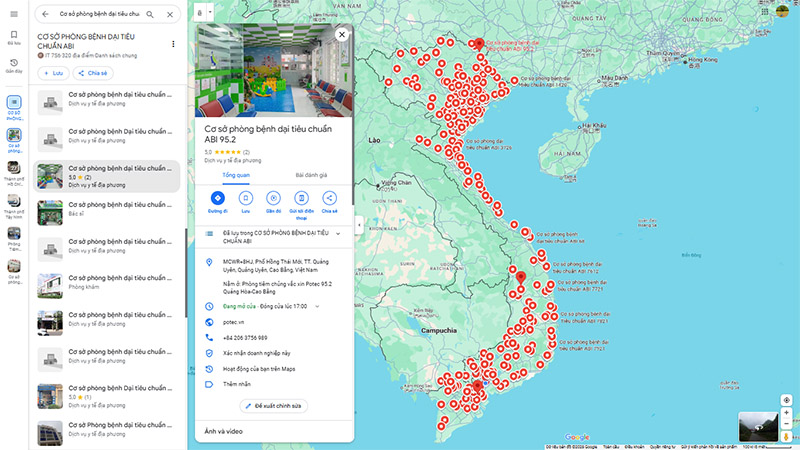 |
| In addition to serving the people, ABI maps are also a powerful tool for medical facilities and supply chains. The system helps automate supply management. |
Dr. Luong Kim Dinh, Safpo/Potec vaccination system, said that the project "Establishing a map of ABI standard rabies prevention facilities" started in April 2024. This process is divided into 3 main phases: research and development: The project team analyzed search methods on Google Maps, identified the requirements and standards needed to update vaccination facility data on this platform.
Testing: The pilot phase successfully put the entire Safpo/Potec vaccination system – a widespread network of vaccination rooms – on the map, evaluating its effectiveness and practical applicability.
Operation: With close coordination between partners, the project has so far updated more than 200 qualified vaccination facilities on the ABI standard rabies prevention map (abbreviation: ABI) as of November 2024. With the target of 1,000 points nationwide, we hope this project will ensure progress. These vaccination points will always be guaranteed to operate according to professional regulations, always have vaccines and anti-rabies serum available, meeting the needs of people at all times.
Based on Google Maps, the ABI map is more than just a search engine. It is designed to connect people to the nearest medical facilities that have rabies vaccines and serum available. With just a few taps on a smartphone, any geographical distance is shortened, providing the opportunity to access timely treatment – which for many people, can be the difference between life and death.
Each vaccination point on the map is not just a physical address, but also a commitment from the health system that anyone, anywhere, deserves to be protected from the dangers of rabies.
Improve supply chain systems
Not only serving the people, according to Dr. Kim Dinh, the ABI map is also a powerful tool for medical facilities and supply chains. The system helps automate supply management, ensuring that vaccination rooms participating in this project are always fully stocked with vaccines and anti-rabies serum, avoiding the situation of vaccine not being available at any given time.
With more than 1,000 vaccination sites to be integrated, the ABI map is not only a tool, but also a bridge connecting the harmonious coordination between technology, health and the practical needs of the community. At the same time, the project supports the national program to effectively monitor the quality and quantity of vaccination facilities, contributing to building a more sustainable health network.
The ABI project aims to establish at least one rabies vaccination site in every district nationwide, with the hope of reaching 1,000 and more. In the future, real-time data will be integrated, providing accurate information on vaccine inventory at each facility, helping to ensure the quality standards of these facilities, in addition to improving management efficiency and rapid response to urgent needs.
Facilities participating in the ABI map will also participate in specialized training programs on pre-exposure and post-exposure rabies prevention conducted by the National Rabies Control Program in collaboration with the Company.
The ABI map helps increase people's access and connection to vaccination clinics, helping to improve the reputation of health facilities through online interactions with people. This is also a motivation for facilities to maintain operating standards and better meet the needs of the community.
The project “Mapping ABI Standard Rabies Facilities” is not only a step forward, but also a deeply humane solution. It represents a joint effort of many organizations in protecting public health, raising awareness and minimizing the serious impact of rabies. This is a big step towards a safer and healthier society.
The project implementation process is well organized, has a clear roadmap and cooperation between stakeholders, from technology experts to medical facilities. This shows a serious investment in both intelligence and resources.
However, the biggest challenge is ensuring that data is always updated accurately and synchronously. Maintaining the continuity and quality of each facility, especially when expanding to 750 injection points in the coming period, will require close cooperation and long-term commitment from relevant units.
Source: https://baodautu.vn/no-luc-phong-chong-benh-dai-qua-ban-do-tiem-chung-abi-d239360.html



![[Photo] Keep your warehouse safe in all situations](https://vphoto.vietnam.vn/thumb/1200x675/vietnam/resource/IMAGE/2025/10/1/3eb4eceafe68497989865e7faa4e4d0e)


![[Photo] President of the Cuban National Assembly visits President Ho Chi Minh's Mausoleum](https://vphoto.vietnam.vn/thumb/1200x675/vietnam/resource/IMAGE/2025/10/1/39f1142310fc4dae9e3de4fcc9ac2ed0)
![[Photo] Hanoi morning of October 1: Prolonged flooding, people wade to work](https://vphoto.vietnam.vn/thumb/1200x675/vietnam/resource/IMAGE/2025/10/1/189be28938e3493fa26b2938efa2059e)






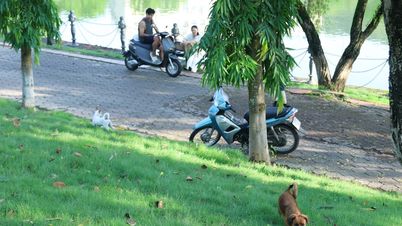

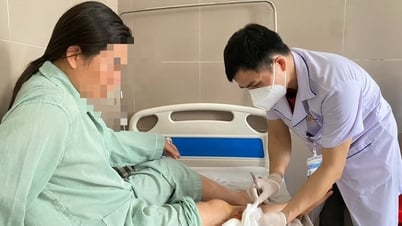
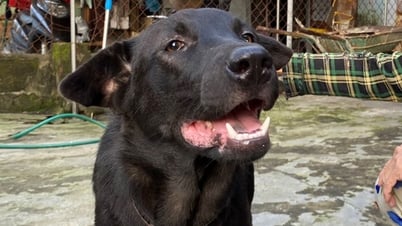






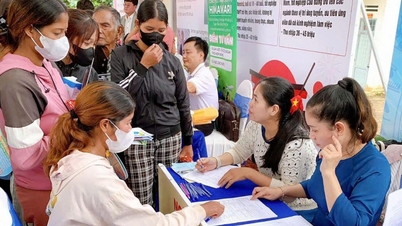








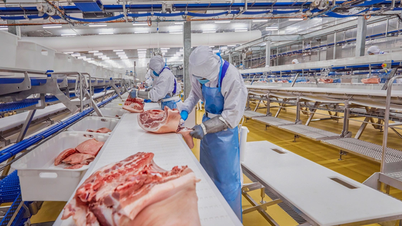









































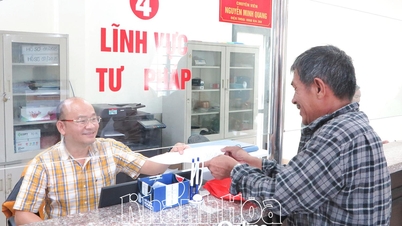
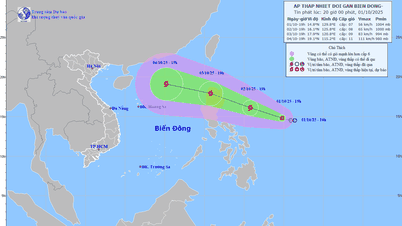















Comment (0)